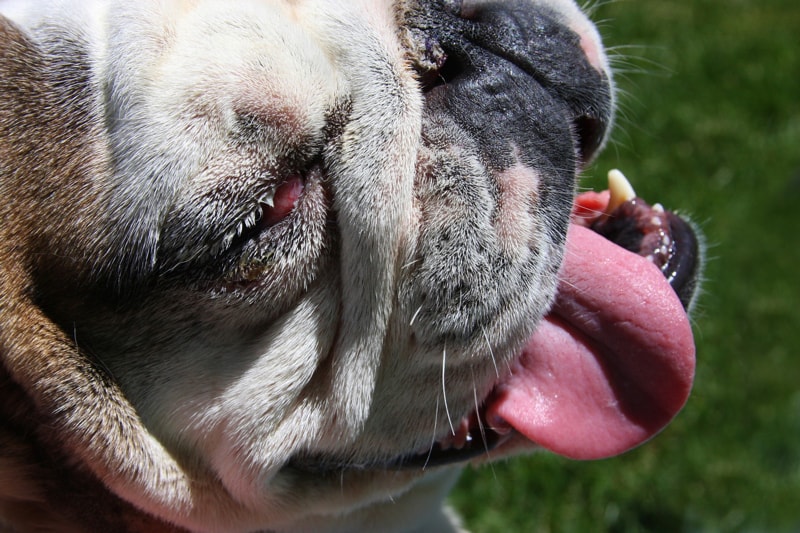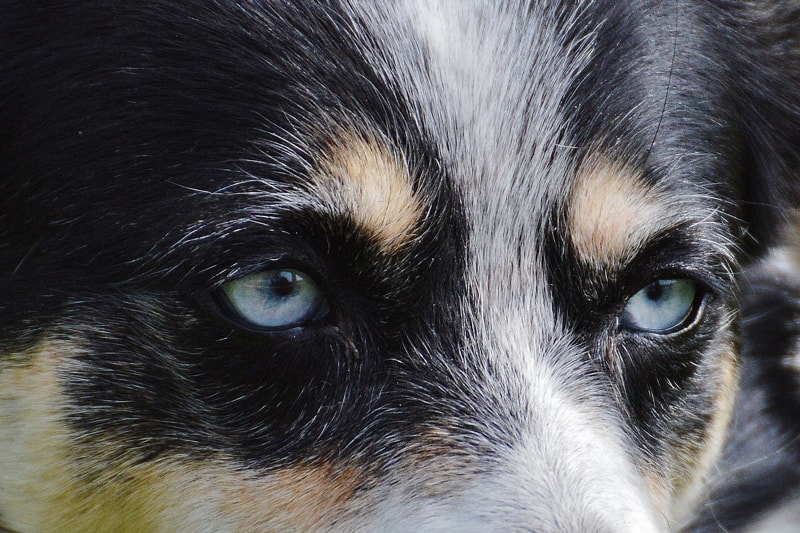
If you have a dog, you may already have had experience dealing with eye issues. They're not uncommon for our canine friends. In fact, ASPCA Pet Health Insurance customers submitted thousands of claims last year for a range of eye problems.*
These topped the list:
- Corneal damage
- Dry eye (keratoconjunctivitis sicca)
- Pink eye (conjunctivitis)
- Eyelid mass
- Cataracts
- Glaucoma
- Cherry eye
- Entropion
So what exactly are these issues and what should you do about them? Read on to find out.
Corneal Damage
There are plenty of ways your dog can injure their eyes and damage the cornea. They could scratch their eye with their nails trying to satisfy an itch. They might get poked by a branch as they are running past the bushes. Or they could get a bit of dirt or debris in them while playing outside.
The signs of corneal damage can include redness and excessive tearing. You may also notice your dog pawing at the eye since it can be irritating and painful. If you suspect your dog has an eye injury, you should have a veterinarian take a look. They can assess the extent of the damage and recommend treatment, which could include antibiotic drops to help avoid infection.

Dry Eye (Keratoconjunctivitis Sicca)
Keratoconjunctivitis sicca is quite a mouthful so we'll stick to calling it dry eye. This condition occurs when a dog's tear glands aren't producing enough tears to properly lubricate and clean the eye of dust and other debris. Dry eye can result in scratches, ulcers, and other problems with the eyes.
Signs of dry eye can include redness, squinting, blinking, and pawing at the eye. Talk to your veterinarian if you suspect your dog has dry eye. They may recommend applying sterile saline or artificial tears to your dog's eyes to help alleviate the problem.
Pink Eye (Conjunctivitis)
Like people, dogs can get pink eye with those familiar symptoms, including redness, inflammation, and gooey eye discharge. Pink eye can be caused by a viral or bacterial infection. If it's bacterial, your dog will need an antibiotic eye solution to help clear it up.
Pink eye can also be brought on by an allergic reaction or if something gets in your dog's eye. If your dog is allergic to something like a particular scent or cigarette smoke, you can try to keep them away from the irritant. In the case of outdoor allergies or hay fever, you can ask your veterinarian about using a saline solution or artificial tears to flush irritants from your dog's eyes when they come back inside.

Eyelid Mass
If you notice a bump on or at the edge of your dog's eyelid, you should have it checked out by your veterinarian. Fortunately, these masses are often not cancerous. They can be caused by issues including a cyst or benign tumor. Your veterinarian can help determine if the mass is cancerous and whether or not it requires treatment such as surgical removal.
Cataracts
If you notice that your dog's eyes are getting white or cloudy, cataracts may be to blame. This condition tends to show up in dogs as they get older, much like it does for people. As cataracts progresses, they can impede your dog’s vision and eventually lead to blindness. Cataracts can also be a sign of an underlying illness, such as diabetes. Contact your veterinarian if you start to notice signs of cataracts in your dog's eyes.
Glaucoma
Glaucoma happens when fluid in the eye does not drain properly and causes pressure inside the eyeball. Symptoms can include redness, tearing, cloudiness, dilated pupils, and bulging of the eye. It can be painful and eventually result in blindness. Any dog can have glaucoma, but it is more prevalent in certain breeds including Cocker Spaniels, Poodles, and Chow Chows. Medications to control pain, decrease fluid production, and increase drainage can be helpful. In more severe cases, surgery may be needed.

Cherry Eye
Did you know dogs have three eyelids? The third one is normally hidden away in the inner corner of the eyelid. However, if the ligaments that hold it in place weaken, it can stick out like a red cherry from the corner of your dog's eye. This condition typically requires surgery to repair. It is also more prevalent in certain breeds of dogs, like Beagles, Bulldogs, Cocker Spaniels, Bloodhounds, and Shih Tzu.
Entropion
Entropion is a hereditary eyelid abnormality that causes the eyelid to fold inward. When this happens, the eyelashes or hairs on the outside of the eyelid can rub against the cornea resulting in irritation and damage to the eye. It can also cause corneal scarring, which can interfere with your dog's vision. Signs of entropion can include squinting and excessive tearing. Some breeds are more prone to entropion, including Bulldogs, Shih Tzu, and Yorkshire Terriers.

Healthy Eye Care for Dogs
While you can't always prevent a dog eye problem, there are things you can do to help keep your pup's eyes healthy and injury-free. For instance:
- Look into their eyes – It’s a good idea to take a close look at your dog’s eyes regularly to see if there are any changes, like redness, cloudiness, or tearing.
- Schedule those check-ups – Routine wellness exams can help your veterinarian detect eye problems in the early stages even before you might notice them.
- Clean them gently – When you give your dog a bath, you can use a cotton ball or soft cloth to gently clean around they eyes. Wipe outward from the corner and be careful not to scratch the eye. If your dog has tear staining, which causes dark spotting in the fur around the eyes, you may need to clean them more often.
- Clip their nails – This can help prevent your dog from injuring their eye if they paw at their face. If you're worried about cutting your dog's nails on your own, ask your veterinarian or groomer to show you how or do it for you.
- Trim their hair – When you groom your dog, make sure the fur near their eyes isn't so long that it irritates them.
- Close windows when driving – You should never let your dog hang their head out the window of a moving car no matter how much they love it. It’s simply not safe. You should also close your windows when your dog is in the car. Bugs, dirt, or other debris could fly in through the open window and harm your dog's eyes.
* Internal Claims Data, 2017
The information presented in this article is for educational and informational purposes only and does not constitute or substitute for the advice of your veterinarian.
Helpful resources for pet parents
Browse categories
-

How to Care for a Female Dog
Are female dogs easier to train? What is a heat cycle? Does spaying change their personality? Here's what you need to know about caring for female dogs.
-

All About Cockapoos
With a great personality and a tendency to shed very little, it’s no wonder Cockapoos have been popular for more than fifty years.
-

Top 5 Preventive Care Coverage Questions
Who wouldn’t want cashback on their pet's preventive care?

Browse Categories
(opens new window)
